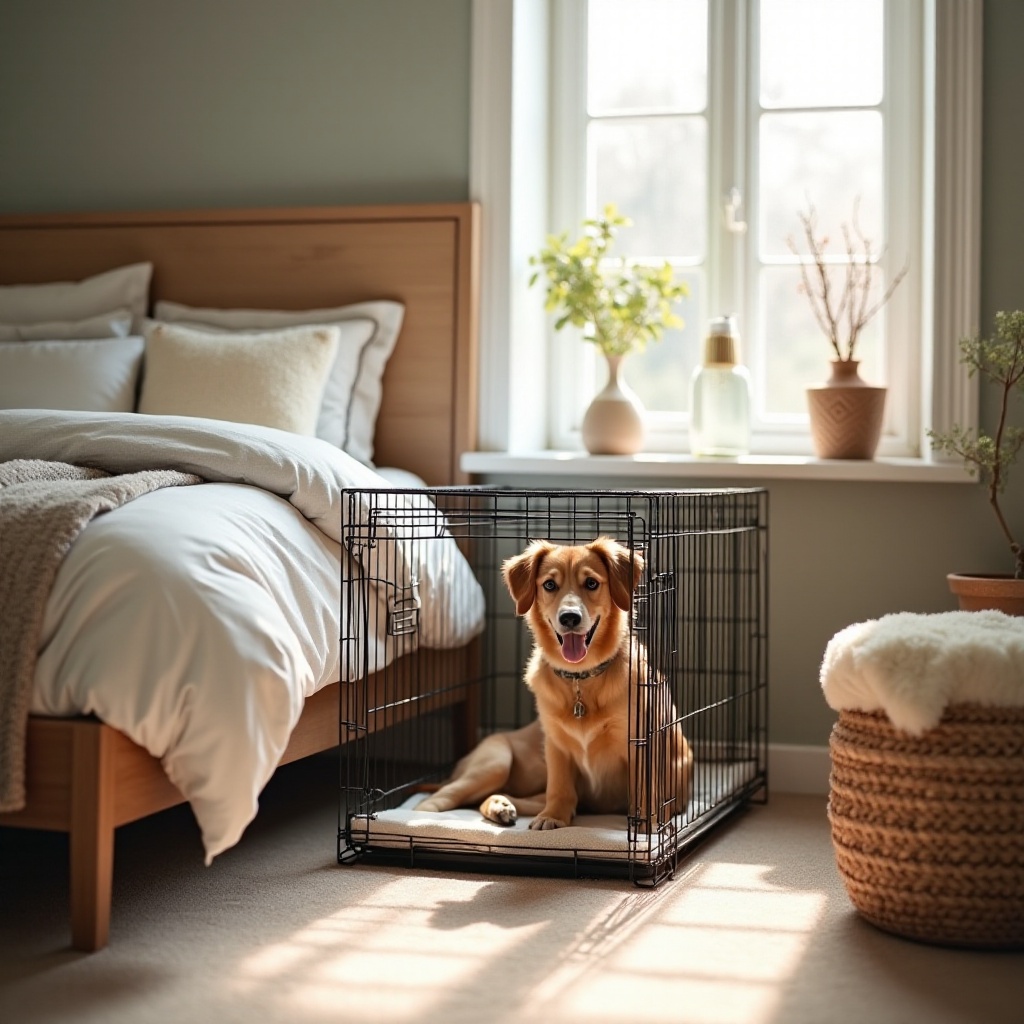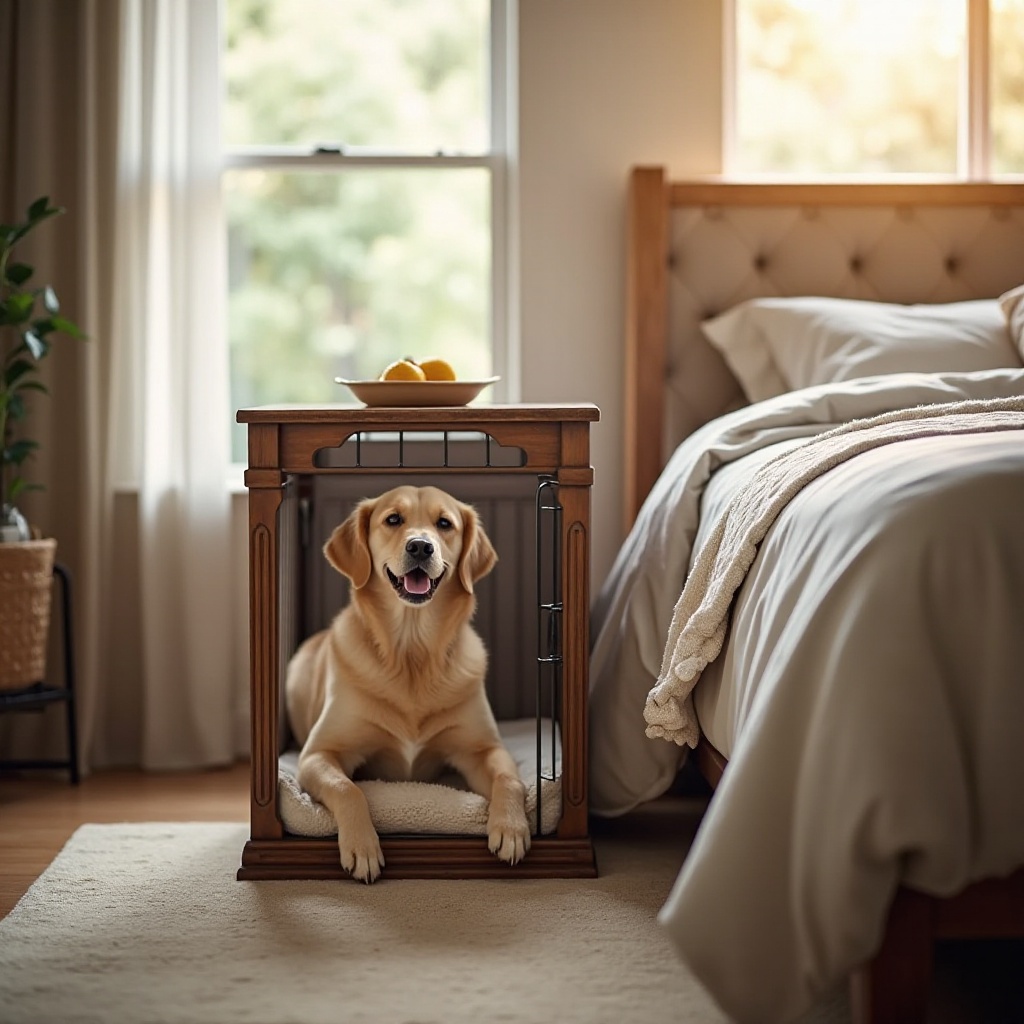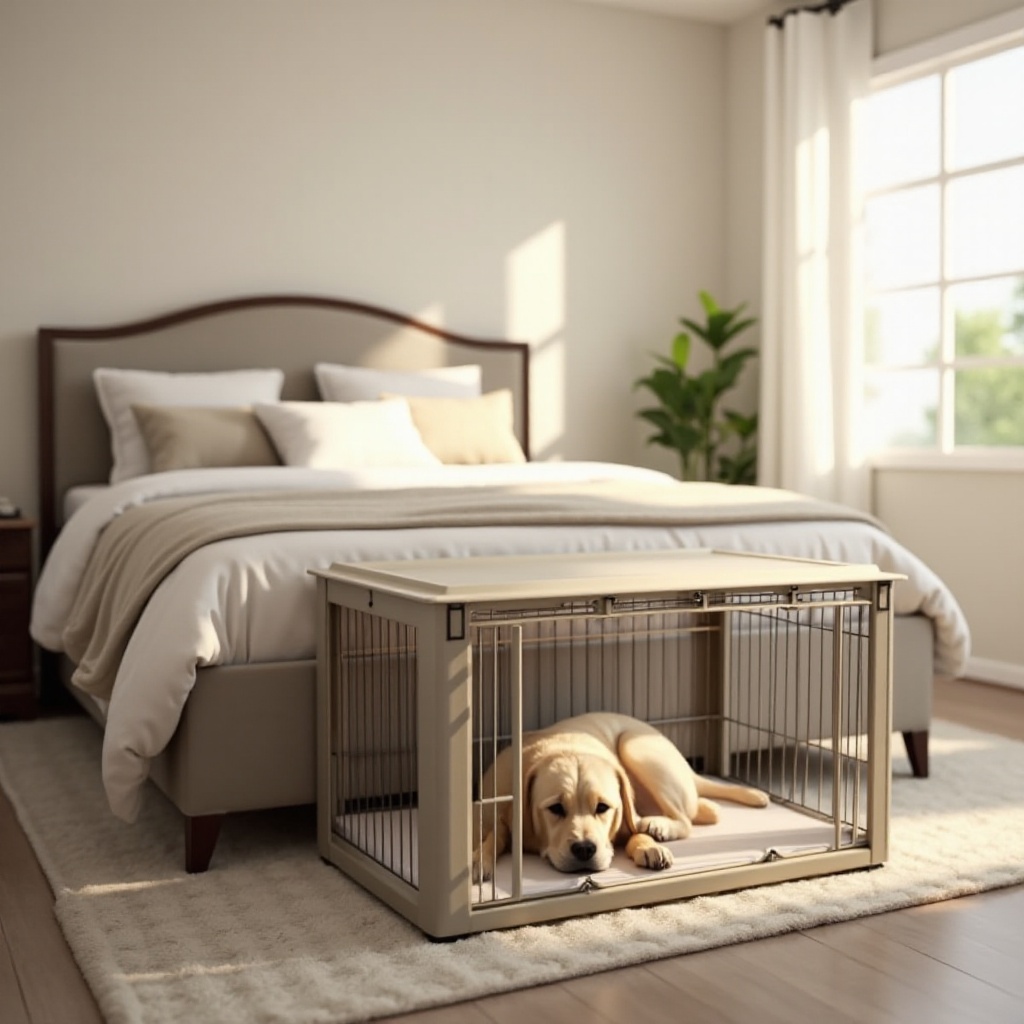Introduction
Keeping a dog crate in your bedroom can foster a stronger bond with your furry friend while providing them a sense of security and comfort. Many pet owners find that their dogs sleep more soundly and feel safer when their crate is placed in the bedroom. In this blog, we’ll explore the benefits and best practices of having a dog crate in your bedroom, from understanding different types of crates to avoiding common mistakes. Let’s dive into how you can make this experience a positive one for both you and your dog.

Understanding Different Types of Dog Crates
Choosing the right crate for your dog is crucial for their comfort and well-being. Dog crates come in different types, each with its own benefits:
- Wire Crates: These are lightweight and provide excellent ventilation. They are easy to clean and often come with divider panels to adjust the space as your puppy grows.
- Plastic Crates: Ideal for travel, plastic crates are sturdy and offer a den-like environment. They are preferred for their durability and security.
- Soft-Sided Crates: Made of fabric, these are great for small dogs and short-term use. They are portable and easy to store, though not as durable as metal or plastic crates.
- Furniture-Style Crates: These crates blend with home décor and can double as pieces of furniture. They are functional and aesthetically pleasing but tend to be more expensive.
Understanding these options will help you choose a crate that best fits your dog’s needs and your lifestyle.
Choosing the Right Size Crate for Your Dog
A properly sized crate is essential for your dog’s comfort and security. The crate should be large enough for your dog to stand up, turn around, and lie down comfortably, but not so big that it loses its cozy, den-like feel. Here’s a simple guide:
- Measure Length: Measure your dog from the nose to the base of the tail and add a few inches.
- Measure Height: Have your dog sit and measure from the floor to the top of their head, then add a couple of inches.
By choosing the right crate size, you ensure your pet’s safety and contentment.

Why You Should Keep the Crate in Your Bedroom
Placing the dog crate in your bedroom offers several advantages that contribute to your dog’s well-being.
Enhanced Bonding with Your Pet
Keeping the crate close fosters a stronger connection between you and your dog. It reassures them of your presence and helps build trust.
Providing a Sense of Security
Your bedroom is a safe haven for your dog. Being near you at night provides a sense of security, reducing anxiety and promoting restful sleep.
Improved Sleep Quality for Your Dog
With fewer distractions and the comfort of your proximity, your dog is likely to sleep better in a crate placed in your bedroom. Better sleep means a happier and healthier pet.

How to Introduce the Crate in the Bedroom
Introducing a crate in the bedroom should be done thoughtfully to ensure your dog adapts comfortably.
Tips for Crate Training
- Start Early: Begin crate training as soon as possible.
- Short Sessions: Keep training sessions short and positive.
- Use Treats and Praise: Reward your dog for entering the crate willingly.
Making the Crate a Positive Space
Create a welcoming environment in the crate. Place soft bedding inside and add your dog’s favorite toys. The aim is to make the crate a pleasant space where your dog feels secure and happy.
Gradual Introduction to the Bedroom Space
If the crate has been elsewhere, slowly move it to your bedroom. Start by placing it near the bedroom and gradually move it inside over several days. This gradual shift helps your dog adjust to the new sleeping arrangement.
Maintaining a Healthy Bedroom Environment
Keeping the crate in your bedroom requires maintaining a clean and comfortable space for everyone.
Keeping the Crate Clean
Regularly clean the crate to prevent odor and dirt buildup. This includes washing bedding and sanitizing the crate itself.
Managing Nighttime Disruptions
Dogs can sometimes be active or noisy at night. Keep a consistent nighttime routine to minimize disruptions, ensuring both you and your dog have a restful sleep.
Creating a Comfortable Sleep Area for Both You and Your Dog
Ensure there is enough space for both you and your dog to sleep comfortably. The crate should not obstruct walkways or your own access to the bedroom.
Common Mistakes to Avoid
Avoid these common pitfalls to ensure a positive crating experience.
Choosing the Wrong Crate
Ensure the crate fits your dog’s size and needs. Avoid using a crate that’s too small or excessively large.
Poor Placement of the Crate
Place the crate in a quiet, secure spot in your bedroom, away from drafts and direct sunlight. Poor placement can cause discomfort and anxiety for your dog.
Neglecting Crate Training and Comfort Needs
Proper crate training is essential for your dog’s adaptation. Neglecting this can lead to stress and fear associated with the crate. Additionally, neglecting your dog’s comfort needs such as proper bedding and toys can make the crate uninviting.
Conclusion
Keeping a dog crate in your bedroom can positively impact your pet’s sense of security, bond with you, and overall sleep quality. By selecting the right crate, introducing it thoughtfully, and maintaining a clean and comfortable environment, you can enhance your dog’s well-being and foster a peaceful cohabitation in your room. Through understanding and care, your bedroom can become a haven for your dog.
Frequently Asked Questions
Can keeping a dog crate in the bedroom improve my dog’s anxiety?
Yes, keeping a crate in your bedroom can reduce anxiety by providing your dog with a sense of security and the comfort of your presence.
How can I make the crate more comfortable for my dog?
Ensure the crate has soft bedding and favorite toys. Regularly clean the crate and maintain a comfortable temperature.
What should I do if my dog whines at night while in the crate?
If your dog whines, check for immediate needs such as bathroom breaks, comfort, or reassurance. Over time, ensure consistent bedtime routines to help your dog adjust.
